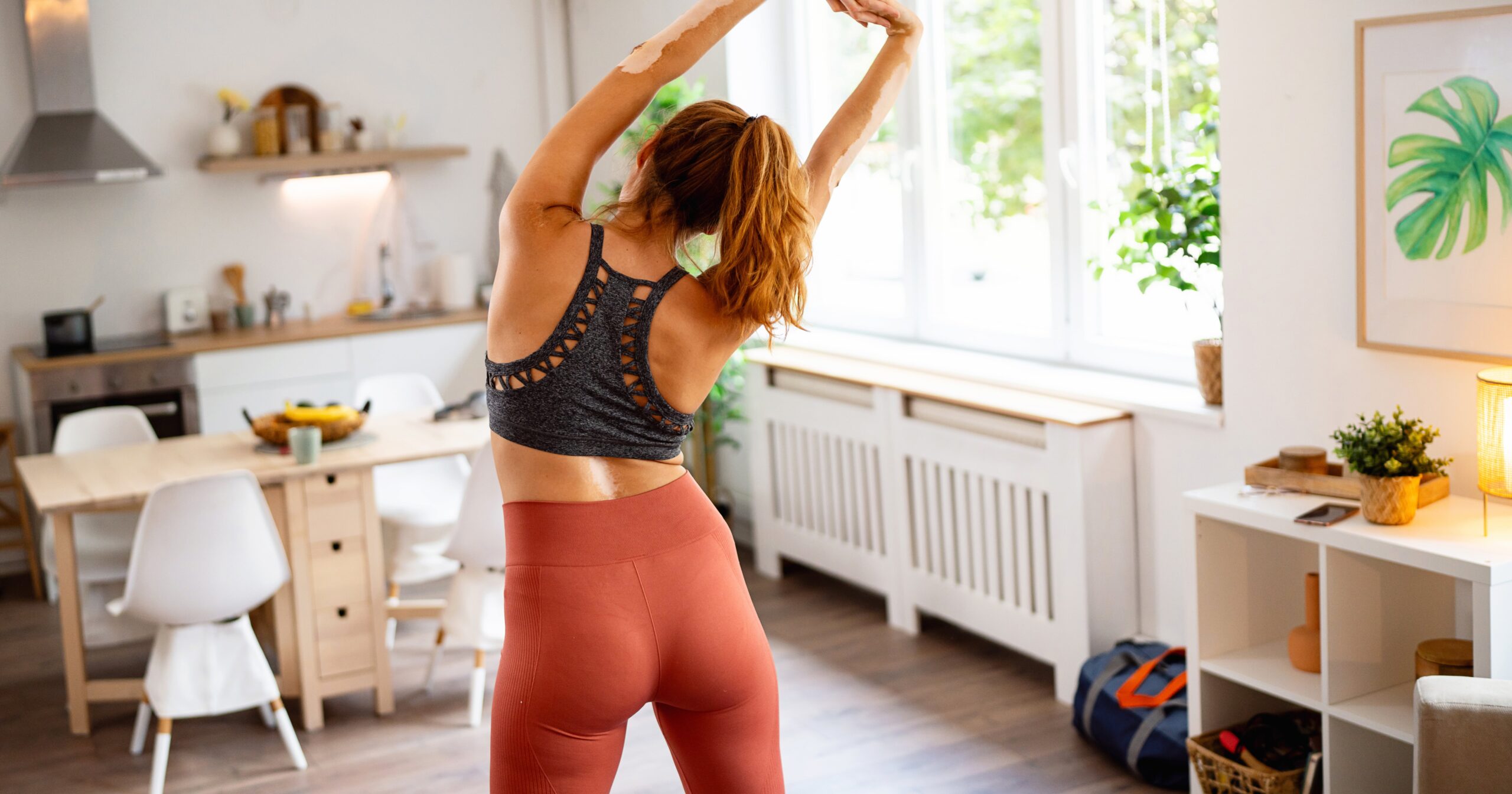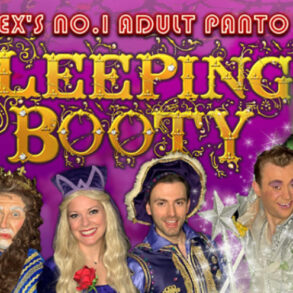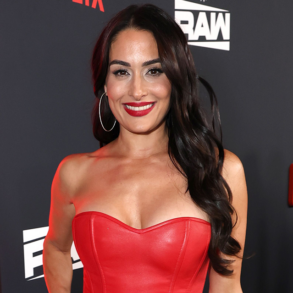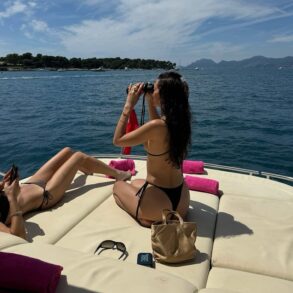
If you’re a parent, the term “clenched butt” might bring to mind a toddler gunning for the potty. For sex educators and havers, meanwhile, it’s an anal-play nonstarter. But to pelvic-floor therapists, butt clenching is the name for a particular pelvic-floor position that can lead to a slew of issues — and this is the type of butt clenching we’re exploring today.
Ahead, we break down exactly what butt clenching is, why it happens, and how to stop doing it.
What’s Butt Clenching, Exactly?
There are two different booty positions that pelvic-floor therapists may refer to as butt clenching, according to physical therapist Corey Hazama, DPT, an expert with Pelvic Gym, a pelvic health education platform created by wearable-intimates brand Ohnut. One type of butt clenching is “the true clench,” she says.
According to Heather Jeffcoat, DPT, a Los Angeles-based pelvic-floor therapist who specializes in incontinence and dyspareunia, with the true clench, people’s butt cheeks are pinched together because their glute (aka butt) muscles are in an overly contracted state. Some people clench their bums involuntarily as part of a stress or trauma response, much like how other people clench their jaws or draw up their shoulders, she explains. (This particular type of butt clenching is also known as butt gripping.)
Sometimes pelvic-floor therapists also refer to butt tucking as butt clenching, says Dr. Hazama. “During the tuck-under butt clench, individuals are passively tucking their pelvic floors under their body,” she says. Also known as a posterior pelvic tilt, this type of butt clenching is a position an individual takes on when they stand, walk, run, and move about.
The reason these two physical manifestations are both known as butt clenching is that they are often found together, though their order of arrival varies. Sometimes the butt gripping comes first, according to Dr. Jeffcoat. Here, “the muscle activity from clenching your cheeks together often leads to posterior pelvic position,” she says.
Alternatively, someone who has a posterior pelvic tilt can begin to glute-grip because the glutes are being called on to do the work that the midline would do in someone who does not have this pelvic position. “Having a pelvic tilt can contribute to weakness of deep core muscles, causing other muscle groups like the glutes to overly engage to do the job,” Dr. Jeffcoat explains.
Wait, Why Does Butt Clenching Happen?
For a few reasons, actually!
Most commonly, people begin butt clenching as a result of having a job that puts them in a prolonged, static standing or sitting position all day, says Dr. Jeffcoat. Standing may look easy-peasy, but doing so actually requires engaging many core and lower-body muscles. “When the stander gets tired, they tend to let the pelvis shift forwards while the rib cage shifts back and sometimes tilts,” says Dr. Hazama. In other words, they adapt a posterior tilt position, which requires less core engagement. Over time, individuals can adapt this position more permanently, which changes not only how they stand, but how they walk, run, and otherwise move.
Similarly, sitting with sound form requires some midline strength. As such, when an individual’s core gets tired, they can begin to sit with their back rolled back toward their tailbone, says Dr. Jeffcoat. (Betcha you just straightened up a little in your chair . . . ) This is particularly common with individuals who look like they are in a slumped-over position, she says.
Butt clenching can also happen to athletes who have been taught to “engage their core” while they exercise, says Dr. Jeffcoat. Clenching your core muscles (which includes your pelvic-floor muscles!) is essential for protecting your spine and internal organs during certain lifts. But just as you couldn’t walk around with your bicep contracted like Popeye all day, you shouldn’t walk around with your core in a contracted position. Keeping your core clenched can result in keeping your butt clenched, Dr. Jeffcoat says, which can result in the same cascade of physical symptoms.
People can also begin butt clenching as a protective response to physical or emotional trauma, says Dr. Jeffcoat. Indeed, butt clenching is often seen among survivors of abuse, as well as people who recently gave birth. Here, individuals will bear down on the pelvic-floor and glute muscles similarly to how someone preparing for a gut punch might, she explains.
Why Butt Clenching Isn’t Great
Butt clenching may be something people do subconsciously, but that doesn’t mean it’s without side effects. Unfortunately, butt clenching can have a domino effect on the body, leading to a series of musculature issues that result in pelvic-floor or full-body symptoms.
When your glutes are in a constantly contracted position, it’s likely that the rest of the muscles in your pelvic floor are also in a contracted position, says Dr. Jeffcoat. This, she explains, can lead to back pain, anterior hip or groin pain, as well as symptoms associated with an overactive pelvic floor (also known as a hypertonic pelvic floor). To name a few: increased urinary urgency, urinary frequency, constipation, painful penetration, and lower-back or pelvic pain.
Meanwhile, “when your pelvis is tucked under your body, it shortens your glutes muscles as well as the back part of your deep pelvic-floor muscles,” says Dr. Hazama. This can alter your movement patterns during all sorts of actions, such as sitting, walking, running, and hinging (like picking things up off the ground), she says.
How Do You Know If You’re Doing It?
Most people aren’t aware that they’re butt clenchers, says Dr. Hazama. Both butt gripping and butt tucking happen passively, without us actively making the decision to engage our glutes or reposition our tailbone. However, there are a few ways you might be able to tell if you’re a butt clencher.
First, look in the mirror. Look at your posture from the side and take inventory of how your body looks and feels, suggests Dr. Jeffcoat. Is there a slight curve in your lower back? Do your knees and hips feel locked? Do you notice any squeezing in your glutes? Does your left glute feel the same as your right? (Yes, you can be a one-sided butt gripper, too!). If the answer to any of these questions is Y-E-S, you might be a butt clencher, she says.
If you’re wearing non-workout gear, Dr. Hazama also suggests looking at how your pants are fitting. “If you have a wrinkle or crease right below your butt cheeks, you could be a clencher,” she says. If this is you, she suggests pulling your tailbone back and then tipping it up — if you’re a butt clencher, the crease will decrease or go away completely, she says.
Next, do a head-to-toe scan for any aches and pains in your body. Again, going about your day with contracted glutes and a posterior-chain tilt can result in a variety of sexual, urinary, and excretory issues and pain. Knee, ankle, hip, back, and groin pain are also common, according to Dr. Jeffcoat, because the entire area is interconnected.
Exactly What to Do If You Butt Clench
Good news: butt clenching is fixable! “The first step to stop butt clenching is to increase your awareness of tension in this area,” says Dr. Jeffcoat. “Even though it’s occurring subconsciously, once you are made aware, you can make steps to change it to reduce your pain and improve your daily and sexual function.”
1. Work With a Pelvic-Floor Therapist
Sure, there are ways you can make an educated guess around whether or not you’re a butt clencher (as outlined above). But the best way to know for sure is to work with a pelvic-floor therapist.
After all, there are health conditions that can have similar muscular, sexual, urinary, and excretory symptoms. A pelvic-floor therapist will be able to assess your personal movement patterns, musculature, and set of symptoms to come up with a treatment protocol custom-fit to you.
2. Fix Your Posture
If standing most of the day is contributing to your symptoms, Dr. Hazama suggests working with a physical therapist who understands postural alignment. “It’s more complex than just standing up straight and not slouching,” she says.
To improve their standing posture, most people need to increase body awareness, as well as improve hamstring mobility and flexibility, Dr. Hazama says. “You need to know what it means to move your hips forward and backwards, as well as have awareness of when you are moving your hips with or without your pelvis and spine following,” she explains. You also need decent hamstring and glute flexibility, she says, which can be achieved through a variety of modalities, such as stretching, yoga, and foam rolling.
3. Warm Up Before Exercising
Hate to break it to you, but you shouldn’t immediately go from sitting all day to powering through your workout.
“Your hamstrings and glutes may have been put into a shortened position from all that sitting,” explains Dr. Hazama. If you start to run or squat while these muscles are in a shortened position, your lower-body muscles won’t be able to lengthen properly, which can mess with your movement patterns.
Your move: hit a proper dynamic warmup that helps activate and stretch your glutes, hamstrings, and hips.
4. Give Yoga a Try
Yoga can be a great way to undo the damage done by butt clenching — so long as you’re being led by an experienced, attuned instructor.
“When most people go to a yoga or stretching class, they stretch into the positions they are already moving into and then compensate in the positions they are tight in,” says Dr. Hazama. For instance, someone who is a butt clencher and has a pelvic tilt might mega-tuck their pelvis when in child’s pose, because they are used to tucking their pelvis, she says.
Meanwhile, they might put their body into a suboptimal position when trying something like an Upward Dog. “When your hip flexors are tight — as they can be in people who butt clench — the hips lift off the ground, which results in over-arching of the upper lumbar spine,” Dr. Hazama says. In order to begin to course-correct against butt clenching, an individual might scale the movement to Cobra Pose, elevate their hands on yoga blocks, or only stretch as far as they can without compensation.
“Working with a yoga professional who has an eye for overcompensation and encourages you to only go as far as your body can go safely is important,” says Dr. Hazama. This means that for butt clenchers, at-home yoga workouts are not optimal.
5. Bring Attention to Your Butt
Once it’s been confirmed that you’re a butt clencher, Dr. Jeffcoat recommends helping yourself unlearn the clench by continuously bringing your attention to it.
One option is to set an alarm on your phone, then each time it goes off, doing a little correction exercise. “Try consciously squeezing your glutes as hard as you comfortably can and then tucking your tailbone under your body. Release, tuck, release, and repeat five times,” she says. Using a mirror can help ensure you’ve got the right form; look at your posture from the side. It should look and feel different (read: less tucked) after you do the exercise.
Another option is to squeeze your buttocks as hard as you comfortably can and hold for five seconds, says Dr. Jeffcoat. “As you release, feel the softening of those muscles as you visualize them opening up like the petals blooming on a flower,” she says. If the tension you feel is more centered around your anus or vagina (if you have one), take the visual of a flower gently opening to that area instead of the larger glute, she says.
You can try this second exercise in multiple positions, she says, such as standing, seated, lying down flat, lying down with knees bent and feet flat on the ground, on your stomach, and on your hands and knees.
This post was originally published on this site be sure to check out more of their content.









